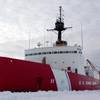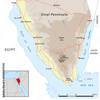The Finnish maritime market continues to serve the high-tech, high-value end of the marine business with a plethora of engineered solutions and continually evolving marine technology. As the brunt of "series production" shipbuilding (ie. bulkers and tankers) is now firmly embedded in the Far East, dominated by Japan, Korea and China, Finland continues to be a dominating force in specialty markets, most notably cruise shipping.
But the industry today is vastly different from that — even five years ago. Finland has not been insulated from the wave of corporate consolidations engulfing the world. In fact, the status of its two signature yards, the Kvaerner shipyards in Helsinki and Turku, continue to be "for sale." And while the two big Kvaerner yards and Aker Finnyards draw the majority of press coverage, much of their success is directly tied to the army of technologically savvy Finnish subcontractors, small to medium sized companies that have the proven capability to supply cost effective solutions for the home market as well as for export. Regardless of change, however, the glue that binds this small, yet dynamic marine force is technology.
This technology is embodied in the wave of increasingly fantastic cruise liners rolling off the production ways at both the Helsinki and Turku shipyards — the latest being the Carnival Spirit, the second in a line of Panamax Max Spirit ships — as well as in the ever-increasing; the innovative propulsion solutions from ABB industry; as much as it is embodied in the gargantuan strides being taken at diesel engine powerhouse Wärtsilä. But the soul of Finnish marine technology is found among the dozens of medium and small-sized organizations that, together with a strong cooperation among government and industry, continue to develop new levels of marine technology.
Making sure that these companies have a voice in the international marketplace falls in the lap of Finpro — formerly called the Finnish Foreign Trade Association — and Timo Karisto, who is the new manager of Finpro's marine technology section. During a recent conversation, Karisto noted that FinPro offers Finnish companies a number of tools, including the coordination of a Finland Pavillion a international trade exhibitions, allow smaller companies "who might not be able to come, or would be shoved away in a corner" to clearly communicate the companies product, service and expertise.
Wärtsilä: The Ship Power Supplier
At first reflection, it may seem a bit odd to hear Mikael Mäkinen — the man charged with ensuring Wärtsilä's worldwide market penetration continues to grow — say that the leading diesel engine manufacturer must be less focused on diesel engines. But he quickly notes: "We want to be a ship power supplier … it's not just about the engine anymore."
Welcome to the marine business 2001.
It was not long ago when the marine industry was dominated by product manufacturers. Ten years and dozens of corporate consolidations later have left the marine industry defined by fewer, larger, single-source system providers, complimented by an army of medium and smaller-sized product and system manufacturers. Make no mistake though, Wärtsilä's legendary adherence to a deep and well-funded R&D program helps to ensure that its entire line of products, including the diesel engines, are continually updated to meet and exceed customer demands and needs. But instead of focusing solely on creating an engine with a bigger bore, for example, the company is investing in making the entire propulsion system more efficient, cost effective and maintenance easy.
Mäkinen said the "environmental angle" is the company's competitive edge, and its work on developing smokeless engines, among others have helped to redefine the propulsion sector. Counting on the company's relationship with propeller manufacturer Lips as an additional step in becoming a single source propulsion supplier, Mäkinen admits "I would say that there is room for further consolidations (in the propulsion sector)."
He said that the idea of a "single source" provider has been popular among shipowners, and he has even found that many of the Chinese shipyards have used the Wärtsilä service as a marketing tool to attract customers.
And according to Mäkinen, any customer-attracting strategy available will need to be employed in the coming years, as the marine market just finished what he calls a record year in terms of new orders received. The newbuilding pace, he estimates, will cool in the coming years, as deliveries from this year's orderbook hit record highs. But there remain attractive niches.
For example, he notes that there could be a significant influx of new tanker orders, driven by new rules and regulations devised in the wake of recent, high-profile disasters such as Erika. The RoPax market looks poised for strong growth, particularly in Asia. The Asian market has traditionally relied on second hand vessels, but a large number of accidents could spur the ordering of new ships. In addition, he notes that the containership market, driven by growth estimates of seven to eight percent per year, could drive demand for new ships.
Subscribe for
Maritime Reporter E-News
Maritime Reporter E-News is the maritime industry's largest circulation and most authoritative ENews Service, delivered to your Email five times per week










